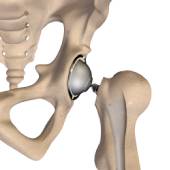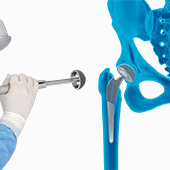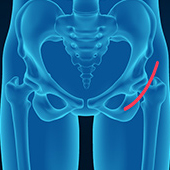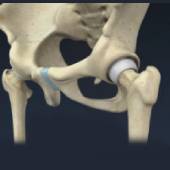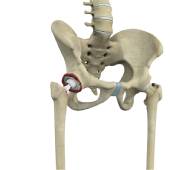Hip Procedures
- Anatomy
- Conditions
- Procedures
Total Hip Replacement
Total hip replacement is a surgical procedure in which the damaged cartilage and bone is removed from the hip joint and replaced with artificial components. The hip joint is one of the body's largest weight-bearing joints, located between the thighbone (femur) and the pelvis (acetabulum). It is a ball and socket joint in which the head of the femur is the ball and the pelvic acetabulum forms the socket.
Robotic Total Hip Replacement
Total hip replacement is a surgical technique where the severely damaged cartilage and bone of the hip joint are removed and substituted with an artificial prosthesis which is bio-compatible and functions like a normal hip.
Rapid Recovery Hip Replacement
Rapid recovery hip replacement is an innovative and minimally invasive surgical procedure to replace a damaged hip joint with a prosthesis. It is associated with minimal post-operative pain and discomfort and a shorter recovery time.
Same Day Discharge Hip Replacement
Hip replacement surgery is the most common orthopedic surgery performed. It involves the replacement of the damaged hip bone (ball-shaped upper end of the femur) with a metal ball attached to a metal stem that is fixed into the femur and attached to the pelvic region. Traditionally, the surgery was performed with a large, open incision and required the patient to stay in the hospital for several days.
Hip Resurfacing
Hip resurfacing is an alternative to total hip replacement surgery where both the ball and socket of the hip joint are completely removed and replaced with plastic, metal, or ceramic prosthetics.
Revision Hip Replacement
Revision hip replacement is a complex surgical procedure in which all or part of a previously implanted hip-joint is replaced with a new artificial hip-joint. Total hip replacement surgery is an option to relieve severe arthritis pain that limits your daily activities.
Core Decompression for Avascular Necrosis of the Hip
Avascular necrosis commonly affects the head of the femur. Necrosis leads to tiny cracks on the bone which finally causes the head of the femur to collapse. The condition causes pain due to increased pressure in the blood vessels of the bone marrow at the region of the necrosis.
- Anatomy
- Conditions
- Procedures



